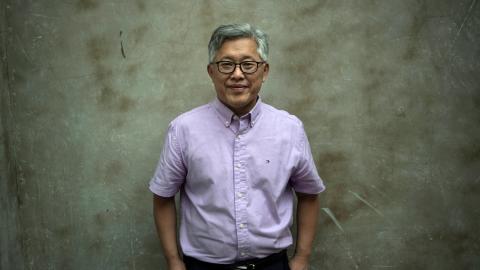Lately I’ve been entertaining the dispiriting thought that the United States is fighting a 20th-century war in Afghanistan, while the Afghan National Security Forces (ANSF) we’re training are fighting an 18th-century war—and the insurgents are the only ones fighting a 21st-century war.
The ANSF’s biggest problem is, in Western terms, an 18th-century problem: attrition. Desertion was such a big issue for 18th-century and earlier European armies that it influenced tactics. Commanders made sure not to bivouac their men next to forests where they could easily disappear, and part of the reason for the use of tight formations in battle was precisely to prevent men from slipping away. (The other reason, of course, was the lack of radio or other ways to communicate over distance.)
Roughly speaking, after the Napoleonic Wars introduced the citizen army and universal conscription to Europe, desertion declined as a problem. People began to identify as citizens of a state, with accompanying patriotic feelings that motivated military service. Professional armies were established, with rewarding careers open to talented individuals of whatever background.
In Afghanistan, we’re at 1750. Those nationalistic, patriotic feelings don’t extend to the 42 percent or so of the population who are Pashtuns. Pashtun participation in the army and police is about 10 percentage points under their representation in the population, because many Pashtuns are actively hostile to the notion of an Afghan state. Many others justly feel reprisals from local insurgents on their families if they join.
Even worse, some eastern and southern Pashtuns I’ve talked with believe that the percentages of Pashtuns in the ANSF is significantly smaller than it really is—leading to conspiracy theories about the ANSF as ethnically hostile carpetbaggers. (Part of this perception, in turn, stems from the delusional belief among many Pashtuns that they are 70 percent of the population. Sadly, I’ve heard this even from Afghan-American Pashtuns.)
Attrition in the Afghan National Army (ANA) fluctuates between 50-60 percent, with men going AWOL from their three-year enlistment terms when the harvest calls all hands. (And in southern Afghanistan, where I just did an embed with the 82nd Airborne’s Task Force Fury (TFF), it’s the poppy harvest, happening now, that calls many men to travel to Helmand.) Police attrition rates at the moment are a little lower nationwide than the army’s—they declined after police pay was raised to parity with army pay last November—but in dangerous areas they are almost comic.
“Every month, 100 men are coming and 100 men are going,” the recruitment officer for Zabul’s police force told me. This explains why “police soldier” (enlisted men) statistics are kept by the recruitment officer, rather than the S-1 or personnel officer who keeps noncommissioned officer (NCO) and officer figures. About a third of Zabul’s police NCOs and officers quit over the course of a year.
They have reason. Zabul is pretty dangerous; the Taliban have killed 10 Afghan civilians just in April and 15 in 2010 to date. “Right now one of every three IEDs (improvised explosive devices) in Zabul is set off by an Afghan civilian, and one of 15 hits an ANSF,” said LTC David Oclander, commander of Task Force Fury. (IEDs are killing far fewer U.S. troops since the advent of the new Humvee equivalent MRAPs in Zabul this winter.)
Also, as I’ve detailed in my blog previously, corruption is rife in Zabul, with honest ANSF likely to be victimized by their superiors or the local government. And though ANSF pay is better than it used to be, starting at $250 a month, there’s no pension plan for career service.
What’s really bad news is that the insurgents are in their way adapting more creatively to 21st-century conditions than we are. The Taliban and other insurgent groups fight on motorcycles in rugged terrain, while we are stuck in much less mobile Humvees. They use mobile phones (which work pretty well in most places in Afghanistan) for command and control, while we have yet to make use of the battle-space potential of the iPhones we’ve invented. Even if the insurgents had modern radio communications systems, it would make sense for them to use mobiles, because communicating with their support base in the local population is crucial. They know just how to intimidate the local citizenry—probably an optimistic word—while we don’t seem to know how to motivate them. And while Afghanistan hasn’t given the world much in the way of technological innovation in, say, the last 500 years, Afghans are getting a lot better with IEDs than they used to be.
Luckily, the ANSF also use motorcycles, when they have them—the U.S. has purchased a small number for the police, but in general we equip the Afghan National Police with Ford Ranger trucks and the ANA with uparmored Humvees—and mobile phones, in addition to the radio gear we supply. The ANSF use motorcycles they've captured from the Taliban against them. The ANSF have also developed some effective homegrown ways of clearing routes for IEDs, as Captain Derrick Hernandez of Task Force Fury explains; they use long poles to probe the road ahead. Lieutenant Levi Toulouse of TFF says that they also can discern dirt that’s been recently disturbed. They have an eye for dirt equivalent to that of an 18th-century Native American for signs of use on a trail. And when they can, they use local kinship networks to help them fight the enemy. (In Zabul, 90 percent of the police are from outside the province, so this doesn't work so well.)
I don’t want to paint too bleak a picture here; American commanders are well aware that we can’t make the ANSF into a mirror image of the American armed forces or police. We have adapted technologically, with terrific new MRAP armored vehicles shielding troops from IEDs much better than the old Humvees. But too often, we seem slow to adapt to Afghan realities. Maybe it’s because we have too many pre-existing beliefs about what a war and an army and a police force should look like. Our enemies are pure practicality—they’re basically barbarians without much in the way of military or governance theory. And it would be a shame if barbarism triumphed here due to a lack of American imagination.










